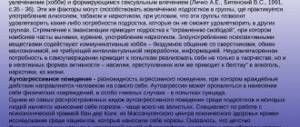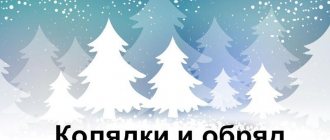The Russian people carefully honor the traditions created by their ancestors over the centuries. In everyday activities and holiday celebrations, in important life events, the imprint of customs can be traced. Procedure. poems and songs, attributes, sayings, cuisine - every tradition and holiday created by the people has its own characteristics.
Traditions that mixed paganism and Christianity, home comfort and military exploits, generosity and cheerfulness accompanied the Russian people from birth to the end of their lives. The soul of the Russian people is captured in these customs.
Russian folk holidays
People in Rus' loved holidays and prepared for them diligently. The celebration was carried out by the entire village, accompanied by rituals, festive dishes, and folk festivities. All year round, the workdays of the Russian people were diluted with festive events.
Orthodoxy, which came to Rus', was not able to completely eradicate the pagan traditions of our ancestors. Therefore, in some holiday rituals, different beliefs are mixed. This is especially noticeable in such moments as Christmas fortune-telling, pagan celebrations of St. John's Day (a day popularly known as Ivan Kupala), and farewells to winter on the eve of Lent - Maslenitsa. At the end of summer, the harvest is traditionally associated with a series of great holidays - Spasov.
This amazing paradox lives on thanks to traditions - after the church service, people went to festivities, the meaning of which, at times, is frankly pagan. Next to faith in God, the worship of the forces of nature, and sometimes evil spirits, miraculously coexisted.
The main Russian holidays in Rus':
Winter
- Christmas
- Christmastide
- Baptism
- Maslenitsa
- Palm Sunday
Spring
- Easter
- Red hill
Summer
- Ivan Kupala
- Elijah's day
- Honey Spas
- Apple Spas
- Third Spas
Autumn
- Pokrov day
To section >>
Autumn signs in Rus'
Home / Traditions / Autumn signs in Rus' /
As you know, calendar autumn begins on September 1, and astronomical autumn begins on the day of the autumnal equinox, that is, on September 22.
In folk superstitions, the beginning of autumn is associated with the departure of birds, leaf fall, and frosts. For centuries, people have observed, analyzed, and compared natural phenomena, as a result of which autumn signs appeared. According to some distinctive features, without resorting to the help of weather forecasters, of whom there was no trace yet, our ancestors learned to predict a lot. For example, back in the spring they knew what summer would be like and what to expect from autumn. Even in winter, they decided what they would do with the future harvest and what they would sow in the fall.
Autumn signs came to the rescue if people were preparing for the holidays. It is very convenient to plan events knowing what the weather will be like on a given day. Our great-grandfathers managed to create signs of autumn for almost all calendar days from the end of August to the end of November. Yes, yes, there are signs for September 1, 2, 5, 6, 8, 9, 10, 11, 13, etc.! The same thing applies to October, November and all other months of the year! And many of these signs are much more accurate than weather forecasters!
1. There are a lot of rowan trees in the forest - autumn will be rainy, few - dry.
2. If the cranes fly high, slowly and “talk,” it will be a good autumn.
3. Thunder in September foreshadows a warm autumn.
4. Until the leaves fall from the cherries, no matter how much snow falls, the thaw will drive it away.
5. There are sparse clouds - it will be clear and cold.
6. If there are a lot of nuts, but no mushrooms, the winter will be snowy and harsh.
7. If birch trees turn yellow from the top in autumn, next spring will be early, and if from below, then late.
8. Warm autumn - for a long winter.
9. In autumn the morning is gray, so wait for a red day.
10. A lot of acorns on an oak tree in September - for a fierce winter.
11. Migratory birds fly high in the fall, so there will be a lot of snow, and low - there will be little snow.
12. Thunder in September foreshadows a warm autumn.
13. A lot of cobwebs in Indian summer - for a clear autumn and cold winter.
14. Cobwebs spread over plants - for warmth.
15. If the first day of Indian summer is clear and warm, then the whole autumn is clear and warm, and vice versa.
16. The appearance of mosquitoes in late autumn means a mild winter.
17. Until the cherry leaf falls cleanly, no matter how much snow falls, the thaw will drive it away.
18. If in the fall the birch leaves begin to turn yellow from the top, then the next spring will be early, and if from below, then it will be late.
19. In October there is thunder - snowless winter.
20. Autumn frost - to dry and sunny weather, to a bucket, to warmth.
21. There are a lot of rowan trees in the forest - the autumn will be rainy, if there are few - it will be dry.
22. If there is a lot of dogwood, there will be a cold winter.
23. If cobwebs fly in the fall, Indian summer has arrived.
24. If migratory birds fly high in the fall, there will be a lot of snow, and low, there will be little snow.
25. Aspen leaves lie face up - for an icy winter, inside out - the winter will be mild, and if on both sides - the winter will be average.
We recommend reading
Partner News
Russian folk traditions
Not only holidays, the ordinary life of the Russian people is also accompanied by the influence of traditions. A trip to the bathhouse, the Russian tea tradition, meeting guests - daily life is full of respect for ancestors, because it is thanks to her that traditions are alive.
A special event in the life of every person, a wedding, is also closely connected with ancient customs. The rituals demonstrate a reverent attitude towards family life, the importance of parental blessings for marriage and other moral and spiritual values.
Basic Russian traditions:
- Russian wedding
- Russian hospitality
- Russian family
- Russian loaf
- Russian bath
- Russian tea party
- Russian fair
To section >>
Wine harvest
Autumn holidays among Belarusians are similar to autumn rituals and holidays among other Slavic peoples. One of the main autumn rituals was held on Dozhinki. Similarly, the Osenins in Belarus celebrated the harvest festival - the rich man. The symbol of the holiday was a popular print with grain and a candle inside. Dziady means “grandfathers”, “ancestors”.
In Europe, grape harvest holidays are considered traditional.
It was believed that on this day the first mowing should be done, then there would be plenty of hay. If it rained, they expected a rich harvest of honey. Athenogenes marked the beginning of the harvest. The first sheaf was kept in the hut as a talisman. On this day, magical rituals were performed for a good offspring and against the death of livestock. The horses were bathed, their manes were combed, they were treated to selected hay and oats, and they were freed from any work.
The oat loaf was broken into a number of pieces equal to the number of people present at the ritual. Upon returning home, this bread was used to feed livestock - this was supposed to attract material wealth to the house. On Oseniny, a large meal was always held, in which all residents of the village took part. The obligatory attributes of the festive table were kutia made from cereals and honey, bread, and milk dishes.
The following signs relate to this day: “Lenten Ivan has come, he has taken away the red summer,” “Lenten Ivan is the godfather of autumn,” “No man leaves Lenten Ivan without a caftan.” Dormition Fast, also known as Spozhenki; by consonance and coincidence of time, it is mixed with spozhinki - autumn, the birthday sheaf, the end and celebration of the end of the harvest). September 21 - autumn, the second meeting of autumn. We continued harvesting onions, which had begun the day before. In the villages, the Exaltation is associated with the end of the harvest, this is the third meeting of autumn, the first winter. These days were called thaw, kiselnitsa, October - mud. In everyday life, Pokrov is associated with the end of field work, the collection of the last fruits, with the first frosts and snow cover of the ground. Veil is traditionally a time to attract grooms and weddings. Among other signs about the weather, the following also stood out: “Dmitry’s day of transportation does not await”, “Dmitry in the snow - late spring.”
Velesen is the seventh month of the ancient year, the first month of autumn, dedicated to the god Veles. Nine houses of Maya. Before giving birth to Kolyada, Maya went through nine signs of the Zodiac, visited nine heavenly houses: the house of Maya (Virgo), the house of Veles (Libra), and on the day of Veles - Ryabinkin they collected rowan berries. Memory of Zlatogor and Bus. On the same day, the god of the winds Stribog and his bird Stratim (ostrich) are commemorated. The old recipe was this: “To cure damage in children, you need to go to three lakes or three springs at dawn, silently, without looking back. Celebration of summing up the agricultural year. Weddings begin with Intercession.
Slavic farmers considered September to be the beginning of the year, the month when they harvested their crops. The peasants performed a ceremony to glorify the Family and Rozhanitsy, made sacrifices to their ancestors and glorified family well-being. Autumn on September 14 in the pagan calendar was called the Autumn Serpentine - the time of snake weddings. For example, it was necessary to strike a fire using two dry planks. The earth was fumigated with this fire. It was also necessary to give thanks to the earth for the harvest.
There are several other names for the holiday - Aspozhok, Spasov or Asposov day - a triple derivative of the words Spas, Mistress and reap - after the harvest. This whole week is called Asposova. December 9 is St. George's Day. Yuri is cold. Here’s to you, grandma, and St. George’s day!” - people began to say after its abolition by Tsar Boris Godunov.
People worshiped the sky and asked it to water the earth for a good harvest. Rich sacrifices were made to the pagan gods, prayers and thanksgiving were offered, and people tried to attract their favor through ritual dances. Afraid of angering them with vanity and insufficient attention, the ancient Slavs prepared for rituals in advance and set aside not only whole days for this, but sometimes whole weeks, if the issue was very important.
Dmitrov's Saturday was always celebrated solemnly: they went to the graves and served memorial services there, and arranged rich treats. November 27th is the day of St. Nicholas the Saint, the winter and cold St. Previously, in many places in Russia, the so-called Nikolshchina was celebrated on Nikolina Day.
Russian calendar and ritual holidays of the autumn cycle and their artistic elements
The countdown of autumn days began in August, since the main concern of the farmer came - harvesting grain. To ensure that the harvest was quick and work was tireless, the work was entrusted to the most respected woman in the village, a good worker. On the eve of the harvest, late in the evening, sneaking so that no one would see or cross the road, she made her way to her strip, tied three sheaves and laid them in a cross. And in the morning all the reapers gathered in the field. Having finished their plot, they went to help the lonely, the weak, and those with many children.
In the villages they gathered “brotherhood”. It was a general harvest festival. They brewed “worldly” beer, i.e. the whole “world” (village). Everything that was in the fields is now on the tables, and the most important birthday party was bread.
Our ancestors celebrated autumn three times. On the first day of September - the first holiday of welcoming autumn - the first autumn. On the eighth day - the second autumn, and the third - on the Exaltation, when the grain moved from the fields, and the birds took flight (moved).
On the first day of September they celebrated Semenov's day, people called him “Semyonov - the summer guide”. This holiday appeared from the first years of Christianity in Rus' and was dedicated to the memory of Simeon the Stylite (a Christian saint, famous for having spent 37 years on the pillar in fasting and prayer). On Semenov's Day, the lamps in all the huts were extinguished and a new fire was made from the stove, from which in the evening for the first time since summer, lamps, candles, and torches were lit and evening activities began “by fire.” On Semyonov's day they celebrated a housewarming party. If the day of Simeon the Stylite did not fall on Sunday, then in the morning the women in each house began to thoroughly clean.
Rural youth celebrated this day especially cheerfully and mischievously. The ritual of “burying flies” is interesting. People believed that if “an evil fly is buried in the ground in the fall, the others will not bite.” Along with the funeral of the flies, summer passed away. Village girls, dressed in their best outfits, gathered together and assigned roles in the play “funeral of the flies.” Only girls took part in it, and boys were invited as spectators. The girls caught flies and mosquitoes and placed them in “coffins” - depressions in carrots, turnips, and beets. The parody funeral was carried out according to all the canons of this rite: they held a funeral service, organized a funeral procession, carried it to the “cemetery”, wailed, dug “graves”, buried them, made mounds and put up crosses. During this performance, the girls tried to show all their strengths: cheerful character, creativity, resourcefulness, humor.
By enacting a funny ceremony, the girls actually staged a show for themselves. After all, Intercession was approaching - the time for weddings and matchmaking.
Then a cheerful “wake” was held, in which the boys joined. During the ceremony, games, and dances, couples who liked each other could get closer. And since after Semenov’s day the gatherings began, they had the opportunity to consolidate their sympathies.
September is the month of harvesting a variety of forest gifts: mushrooms, berries, nuts, medicinal roots. Rowan is one of the latest berries. September 23 is Perth Fieldfare day, by this time the berries, caught in the frost, lose their astringency. On this day, the girls, taking baskets, went into the forest. Picking autumn berries turned into a real holiday. The girls danced around the rowan tree and trusted it with their secrets. When picking berries, they always left some of the fruits on the tree, not forgetting about the birds, because winter is long.
There were other holidays in September: on the day of Ivan Lenten (September 11), they started a collective cabbage cutting, they worked cheerfully, with jokes and songs. On St. Luke's day - Onion Day (September 20) - onion fairs were held.
Throughout September there were holidays in honor of the new harvest gathered in the field, forest, and garden.
There were also many holidays in October, but the Feast of the Intercession (October 14) was more significant. The history of this holiday goes back centuries. In 910, a vision happened in Constantinople: during the all-night vigil, the Mother of God appeared, holding a veil in her hands, and announced that this was a saving veil. She spread a white veil over the people and offered a prayer to save the world from adversity and suffering. With this veil, the Mother of God protects believers and brings them love and joy.
In the popular imagination, the day of the Intercession holiday is the boundary between autumn and winter. By this time, the hard suffering was over, and the people could rest, go to the market to trade, and buy new items. From Intercession, weddings began to take place in villages. For Intercession Day, girls weave an “ordinary veil.” Having gathered together, they ruffled flax with special songs, spun and wove linen, trying to complete all the work in one day. Then they carried this veil to the icon of the Intercession of the Most Holy Theotokos and asked in a whisper for the groom.
The beginning of November is given by “winter Kuzma and Demyan” (November 14). This day was established by the Orthodox Church in honor of the memory of Saints Cosmas and Damian. Kuzma-Demyan was considered the patron of crafts.
With Kuzminki (as this day was popularly called), the girls began a series of girls' holidays. They celebrated for several days. On these days, the girls bought the most spacious house in the village, brought food, and set the table. Guys came to the party, and then the fun began. They made a stuffed animal out of straw and ear grass, dressed it up in men's clothing, and named it Kuzma. “Kuzma” took part in games and round dances, and through joint efforts a bride was selected for him. They arranged a funny wedding, where the girls sang majestic songs, as befits a wedding ceremony, and were escorted to the bedchamber. Suddenly, for unknown reasons, “Kuzma” fell ill and died. Everyone also arranged a funny funeral according to all the rules of the real ones. The stuffed animal was placed in a wooden trough and carried through the entire village to the outskirts, where it was burned (sometimes drowned in the river). At the same time they shouted loudly, whistled, and hit basins. These actions, according to ancient belief, drove away evil spirits and evil spirits from the entire village so that they would not interfere with surviving the long, cold winter. Then everyone returned to the village and continued to have fun until the morning.
Autumn is the time for youth gatherings, weddings, folk games, theatrical performances, this is the time of saying goodbye to the past summer and welcoming the coming winter.
What is “bring in the hem”
Kirill Lemokh. New family member. 1890. Astrakhan Art Gallery named after P. M. Dogadin
Kirill Lemokh. New acquaintance. 1885. State Russian Museum
Ivan Pelevin. First born. 1888. State Russian Museum
In modern language, this expression means “to give birth to an illegitimate child,” and even 100 years ago, married peasant women often brought babies in their hems—literally. The expectant mother worked until the birth, which could have started anywhere.
“In the house he does all the housework, and in the field - knitting, flying, threshing, taking hemp, planting or digging potatoes, right up to the very birth. Some women give birth without finishing the loaves. Some will give birth in the field, others in a shaking cart.”
Olga Semyonova-Tyan-Shanskaya, ethnographer. From the book “The Life of Ivan”
Usually they did not prepare for such a development of events and did not carry things for the newborn with them. Sometimes the mother wrapped the child in a scarf, and sometimes she simply carried her home in the hem of her dress or in an apron.
In “Proverbs of the Russian People” by Vladimir Dahl, the expression “Bull-third bull (about a darling)” appears. Worn in the hem." “To wear in the hem” also meant “to pamper.”




